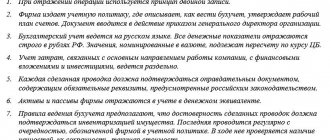general information
First, let's understand the term “operating cash desk”. What it is? This is the name of a special division of the bank that provides settlement and cash services on the territory of a certain company. It is necessary for enterprises that provide the public with access to services and goods, such as: wholesale and retail stores, car dealerships, points of sale of electronics, jewelry, travel agencies, etc.
The bank's operating cash desk acts as a tool for using cash. Why is it necessary? How is it settled? What are the requirements?
What to do if you forgot to take a report
Despite the fact that when using online cash registers, cashiers are not forced to keep journals and take Z-reports, the obligation to hand over the proceeds remains. It is necessary to generate a shift closure document for:
- Monitoring the work of the cashier.
- Quick revenue assessment.
- Transferring the proceeds to collectors.
- Report to the tax authority.
There are many examples from life when cashiers forgot to withdraw a check for closing a shift at the end of the day or did it late. From practice it follows that the tax inspectorate is not biased towards such a violation of discipline if the incident happens once. If violations are repeated systematically, penalties will be imposed.
Important! If the cashier-operator forgot to withdraw the report at the end of the day, he is obliged to draw up a report and an explanatory note.
Documents are kept in case of an audit. Reports on the closure of the shift, generated for the next day, are attached to the cash book.
The new model cash registers provide a document similar to Z-reporting - a report on the closure of a shift. It is adapted according to changes in the technical characteristics of KKM-online. The most important function of reporting is its rapid transfer to the Federal Tax Service.
Z-reports when using online cash registers are not compiled in the form in which they were generated on the old-style cash register with EKLZ. The main task of Z-reports was to reset data based on the results of a worked shift and record information about all operations performed (arrivals, returns, cancellations, discounts). This made it possible to obtain correct information on the volume of revenue for each shift and fill out cash reports.
Why is it necessary?
The operating cash desk is a universal tool whose task is to facilitate the direct use of cash. Thanks to it, it is possible to ensure payment for goods or services in foreign currency. During the purchase process, it will be automatically converted into rubles and go to the organization’s balance sheet. In addition, you can abandon your personal cash register, which will eliminate shortages, daily reporting, re-counting of money, delivery of cash to the bank, paperwork, checking banknotes for counterfeiting. In addition, the speed of internal turnover of funds increases, and there is a good opportunity to save money by reducing internal costs. Upon sale, the money immediately goes to the company’s account. In addition, such close relationships make it possible to obtain quick and profitable loans. We should not forget about the possibility of paying for goods using plastic cards.
As you can see, operating cash desks are quite useful. The currency of any country can be used at any time, which has a positive effect on the level of convenience. At the same time, the management of the enterprise does not need to think about various points and nuances. It simply records that it receives money. Everything else is the responsibility of the banks, which are in charge of the funds received.
Cash discipline in 2020
In order to understand the concept of “Cash discipline”, you first need to understand the difference between the terms “Cash register” and “Cash desk”:
Cash register (KKM, KKT)
– this is a device necessary to
receive
funds from your clients. There can be any number of such devices and each of them must have its own reporting documents.
Enterprise cash desk (operating cash desk)
– this is the totality
of all cash transactions
(reception, storage, issue). The cash register receives revenue received, including from the cash register.
All cash expenses related to the activities of the enterprise are made from the cash desk and money is handed over to collectors for further transfer to the bank.
The cash register can be a separate room, a safe in the room, or even a drawer in the desk.
So, all cash transactions must be accompanied by the execution of cash documents - which is usually meant by compliance with cash discipline.
Cash discipline
– this is a set of rules that must be followed when carrying out operations related to the receipt, issuance and storage of cash (cash transactions).
The basic rules of cash discipline are:
Who must comply
The need to maintain cash discipline does not depend on the presence of a cash register or the chosen taxation system.
You may not have a cash register, but simply issue BSO (strict reporting forms), but you still must comply with the rules of cash discipline. There is only one rule here - if there is cash flow, then cash discipline must be observed.
However, since June 2014, a simplified procedure for maintaining cash discipline
, which most affected individual entrepreneurs.
It is important!
Now individual entrepreneurs are no longer required to maintain a cash register on a par with organizations and draw up cash documents (PKO, RKO, cash book). Entrepreneurs only need to generate documents confirming the payment of wages (payroll and payslips).
Also, according to the simplified procedure, individual entrepreneurs and small enterprises (number of employees no more than 100 people and revenue no more than 800 million rubles per year) are no longer required to set a limit
cash balance at the cash register.
All rules of cash discipline are listed in the instructions of the Bank of Russia (Instruction No. 3210-U dated March 11, 2014 and Instruction No. 3073-U dated October 7, 2013).
Cash documents
Cash desk operations must be carried out by an authorized employee (cashier); in his absence, these functions can be performed by a manager (IP). If there are several cashiers, a senior cashier is appointed.
Cash documents must be prepared by the chief accountant or another appointed official (manager, individual entrepreneur, cashier, etc.) with whom an agreement has been concluded for the provision of accounting services.
In 2020, cash transactions are documented with the following documents:
- Receipt cash order (PKO) - filled in every time money arrives at the cash register
. If cash is issued by a cash register receipt or a strict reporting form, then it is allowed to draw up a PKO for the total amount of cash received per working day (shift). - Expenditure cash order (RKO) - filled in when issuing money from the cash register
. When receiving an order (for example, from an employee who went to buy office supplies), the cashier must make sure that the cash register order is signed by the chief accountant (manager) and check the employee’s identification documents. - Cash book (form KO-4) – data on each incoming and outgoing cash order is entered into the book. At the end of the working day, the cashier must check the cash book data with the data in cash documents and display the amount of cash remaining in the cash register. If there were no cash transactions during the day, the cash book will not be filled out.
- Accounting book (form KO-5) - filled out only if the enterprise employs several cashiers. Entries in the book are made during the working day at the time of transfer of cash between the senior cashier and cashiers and are confirmed by their signatures.
- Payroll and payroll – are prepared when issuing wages, stipends and other payments to employees.
Note
Source: https://www.malyi-biznes.ru/kassovaya-disciplina/
Arrangement process
To build an operating cash desk, you need approximately three to five thousand US dollars. Maintenance every month additionally costs 750-900 green “presidents”. Also, to open an operating cash desk, you need to take care of the availability of a cash register that will meet all the requirements that apply to banks in the Russian Federation. Thus, the workplace must be fenced off from clients and the external premises with bulletproof glass that can withstand shots from firearms. In addition, you must have a special device for negotiations, a cash tray and an alarm button. It is also necessary to connect the premises to the centralized security monitoring console or to the police control room. We should not forget about the necessary equipment: computer, printer, modem.
It is important to note that banks carry out unique and individual technical work separately for each enterprise. Therefore, tariffs for servicing operating cash desks are in an unclearly defined range. Well, the bank in whose favor the choice is made has a certain influence.
Banking Review
Full service
The number of currency exchange offices today has decreased significantly.
For example, Sobinbank currently has one exchange office, although in the recent past the bank’s network included more than thirty such points. Many credit institutions have completely abandoned currency exchange offices in favor of operating cash desks outside the cash desk. The general argument goes something like this: unprofitable. If we compare the set of functions of these structural divisions, then a significant advantage will be on the side of the operating cash desk outside the cash desk. The exchange office sells, purchases and exchanges foreign currency in cash, pays checks, and services payment cards. In addition to these operations, the operating cash desk offers the acceptance and issuance of deposits, the purchase and sale of securities, the acceptance of utility and other payments from the population, etc. The operating cash desk, located on the territory of the enterprise, can service salary projects.
The initial costs of opening a bank branch largely depend on the required number of jobs, the quality characteristics of cash register and computer equipment, the technical characteristics of the premises, the availability and compliance of security systems, etc. According to the head of the department for development of the retail network of Soyuz Bank, Gennady Muravlev, investments in an object of the “operating cash desk outside the cash desk” format amount to about 30 thousand dollars (based on the area of the object - 10 square meters). Preliminary calculations by Mikhail Povaliy, director of retail business development at Alfa-Bank, turned out to be approximately the same - the cost of organizing one operating cash desk for two jobs will be about 40 thousand dollars. At the same time, the speaker noted that the difference in initial investments in cash desks compared to exchange offices is insignificant.
Functional advantage on the side of operating cash desks outside the cash desk. However, exchange offices, although they lost ground, did not disappear from the city streets. This means that in certain cases this format has a right to exist.
A square meter is worth its weight in gold
The rent for the premises makes up the lion's share of the costs of opening and maintaining the operation of a structural unit. And at the first stage of solving this problem, it does not matter whether the bank is going to open an exchange office or an operational cash desk, because the instructions of the Central Bank formulate uniform requirements for all structural divisions of the bank. This must be a room with an area of at least 6 square meters and a ceiling height of at least 2.5 meters.
In practice, such points are usually located in a room with an area of 10–20 square meters. And renting several square meters in Moscow will cost the bank approximately $3,000.
By the way, finding such a “nook” is a rather difficult task. Chairman of the Board of OPM Bank Ekaterina Samoilova said that during the year the credit institution had to close several exchange offices: “In some cases we were unable to agree on a price. And in several buildings planned repairs began and, accordingly, it became impossible to continue work there. Small premises occupied by cash desks and exchange offices are often subject to technical rather than market factors. Therefore, now we have all operating cash desks located in additional offices.”
Energomashbank also had to face the same problems. The head of the department, Natalya Dedeneva, explained: “Some of the bank’s facilities are 10–15 years old. Over time, the requirements for the size of the areas required to serve clients, their technical equipment, external design, etc. change. Sometimes it is simply impossible to carry out any reconstruction work on the premises: all changes and improvements must be agreed upon with the owners of the facilities and the city administration. It is especially difficult to agree on premises located in residential buildings where HOAs have been formed. Often, due to the disagreement of the owners, it is necessary to refuse the lease. We recently closed an income-sufficient unit located on the highway due to the strong opposition of the building's residents to refurbishment work on the premises.”
The strength and security of structural units is also specified in the instructions of the Central Bank. The premises must be bullet- and burglar-resistant and equipped with fire and security alarms. When deciding the technical details of this issue, what is of fundamental importance is not the format of the representation, but whether this premises is a place for storing valuables or not. If cash is not removed from the point at the end of the working day, then it must be a highly secure unit with bars on windows of a certain diameter and frequency, ceilings for ventilation, additional reinforcements and a safe with a high degree of reliability.
Recently, banks received some relief from the regulator. According to the law, if a credit institution has entered into an agreement to insure valuables, then it has the right to independently (in agreement with the insurance company) determine the degree of reliability of the materials and technologies used.
Natalya Dedeneva (Energomashbank) noted that although there are no special requirements for operational cash desks, banks are trying to ensure a higher level of security there due to a wider range of transactions and the flow of clients. Therefore, as a rule, in addition to generally accepted technical security means, cash desks have physical security posts, video surveillance, access control systems, etc.
Collection. One trip of a cash-in-transit vehicle costs about 1,500 rubles in Moscow. The bank may set the frequency of transportation of valuables at its discretion. Gennady Muravlev (Soyuz Bank) explained: “The collection regime for an object is formed based on the volume of cash turnover. For example, at OPM Bank collections are carried out two to three times a week.
And the point is not only in additional expenses, but also in the fact that the procedure for preparing cash for collection takes a lot of time: you need to prepare cash for sending in the evening and accept the bag in the morning. As a result, about an hour of working time is lost.
Equipment. Exchange offices and operating cash desks require an intercom, a banknote counter, a detector for recognizing banknotes, a computer with software, etc. All the technical “stuffing” will cost the bank from 30 thousand to 200 thousand rubles. It is clear that the upper figure is quite arbitrary - you can buy a computer for 10 thousand rubles, or you can buy it for 50 thousand. It all depends on what funds the bank is ready to invest and what goals it pursues.
The same choice - quality or economy - arises before the bank when decorating the premises. These can be standard materials, or they can be expensive types of wood. Thus, in St. Petersburg, one bank has operating cash desks, the design of which is made of mahogany.
Theoretically, the cost of opening a structural unit does not depend on the format of the outlet, but on the tasks facing the bank. In practice, the initial investment in the operating cash desk may be slightly higher. This is due to the fact that exchange offices traditionally have one window, and to ensure normal operation of operating cash desks outside the cash desk, at least two are required. Due to expansion, the cost of operating cash desks increases. However, it pays off much faster. As a rule, banks strive to “pump up” their representative offices with the maximum number of services so that they pay for themselves faster.
Place and time matter
Many explain the decline in the popularity of exchange offices by a decrease in demand for currency exchange services. Wages in the Russian Federation are issued in rubles, prices are also indicated in the national currency, so currency flows within the country have decreased significantly. The head of the cash operations department of Sobinbank, Arvet Kevvay, noted that at the moment a certain set of operations is in demand - exchanging dollars for rubles and exchanging rubles for euros.
However, OPM Bank has a different opinion. Ekaterina Samoilova explained: “Due to the unstable exchange rates, exchange transactions are quite in demand today. A number of our clients regularly transfer their savings from one currency to another and thus make money on the difference in rates. The average amount of such foreign exchange transactions is 15–20 thousand dollars. But, it is clear that there are only a few people who make money from such speculation. And the bulk are transactions with an amount of 100–200 dollars.”
Exchange offices are narrow-profile banking divisions, and therefore, when creating them, the time and place of work are of paramount importance. Natalya Dedeneva (Energomashbank) explained: “Exchange offices either remained in places such as casinos, night clubs, etc., where the bank receives a fairly high profit from performing a small list of transactions, or in places where it is important for the bank not to make high profits, but solving an image or service problem.”
But the number of places where you can get high margins is very small, and large banks have long established themselves in this market. It is almost impossible for newcomers to enter this territory.
Each location is unique
Today, banks work on the principle: “Banking services within walking distance” and open branches in all crowded places: be it the city center, a residential area or highways. Credit organizations usually do not adhere to a standard scheme when opening operating cash desks in different areas of the city, but take into account its territorial characteristics.
Most banks have representative offices in the city center, so the level of competition is highest there. At the same time, in the city center you can expect a large flow of customers, including many tourists. Natalya Dedeneva (Energomashbank), summarizing these factors, explained the specifics of the operation of operating cash desks located in the central districts of the city: “Firstly, when setting rates for the purchase and sale of cash currency, the location of the cash desk is taken into account. Margins in central areas of the city are usually smaller; the required level of income is achieved through a larger number of transactions and higher turnover. Secondly, retail products are in demand (payments, transfers, cash withdrawals, account replenishments, loan repayments, etc.). And, of course, when determining the list of operations carried out by the cash desk, it is necessary to take into account its capacity, operating hours and location - there is no point in organizing a workplace for the purpose of accepting funds as deposits if the cash desk is located at the airport or in a casino.”
At operating cash desks located in residential areas, the emphasis is on providing additional services, including the sale of compulsory motor liability insurance policies. In a shopping complex, the most popular service is accepting payments.
Also, banks usually take into account the wishes of their corporate clients, who can provide space for opening operating cash desks.
ATMs - cheap and cheerful
But the popularity of cash registers outside the cash desk is gradually declining, and some of them are moving to additional offices. Mikhail Povaliy (Alfa-Bank) explained: “Operational cash desks themselves are a low-profit product and, as a rule, serve as an addition to the package of services provided by the bank to partner companies, which includes services such as corporate governance, project financing, and settlement services and etc.".
Transaction cash registers outside the cash register are now seriously competed by payment terminals. So, for example, instead of exchange offices, Sobinbank opened not operational cash desks, but self-service banking terminals, which also perform operations with plastic cards, accept payments for loan repayments, exchange foreign currency in cash, and allow you to deposit money into bank accounts.
The number of bank cards is constantly increasing, and therefore operations to service them are also becoming more and more in demand. Therefore, the need to create a wide network of payment devices is constantly growing.
If necessary, the bank can always expand the terminal option. Director of the bank cards department of Rosbank Andrey Gamolsky explained: “If necessary, we expand the architecture of the existing ATM. One of the options for upgrading an already installed ATM involves attaching specialized set-top boxes to it. The decision to upgrade or replace is made based on several indicators: productivity, maintenance costs, projected business return. The cost of increasing ATM functionality can average 15–40% of the cost of the basic device.”
Having a fairly wide range of functions, the terminals require significantly less initial investment. In addition, if the terminal does not pay for itself, it can be moved to another location without any problems. And banks widely use this opportunity. For example, at Uniastrum Bank, 200 POS terminals are located in bank branches, 1,200 in retail outlets, and another 650 ATMs are “scattered” throughout the country. Rosbank has more than 1,600 ATMs, of which 180 are multifunctional.
Expert opinion
Shamil Aisin, sales department manager at RussCom-Card Plus:
To meet modern requirements, many Russian companies issuing plastic cards use personalization systems.
Among them, I would like to highlight equipment from the CIM brand (Italy), whose representative in Russia and the CIS countries is.
This includes:
· PRO series embossers E1000 and E2000 (with two drums). E2000 is the only embosser that allows you to personalize cards of all payment systems on one machine;
· Thermal 1000 printers;
· multi-threaded card feeding module MultiFeeder MF6000 with six trays with a capacity of 200 cards and a contact pad for encoding the card chip;
· packer of a plastic card into an envelope Inserter 3000.
Vladimir Ulikhin, General Director of DIIP 2000 LLC
To meet modern requirements, many Russian companies issuing plastic cards use personalization systems.
Every year, cash turnover increases by approximately 40%; accordingly, the amount of money supply in banks is growing. It is clear that it is quite difficult to process such cash flows efficiently without using high-tech professional equipment. In addition, there are a large number of counterfeits in circulation, some of which cannot be recognized without the use of special technologies.
These circumstances dictate certain requirements for banking technological support. There are many interesting developments on the market today. One modern machine can replace several old-style devices. Thus, the Kisan K500 PRO sorting machine sequentially performs several operations: sorts banknotes by denomination, by dilapidation, by orientation, and by authenticity. This is a very convenient and, most importantly, compact device. A five-pocket sorter, for example, is suitable for use in the front office, and for servicing structural departments, for example, operating cash desks outside the cash desk, you can use a two-pocket banknote sorter.
With multiple MD8000 multi-function banknote detector devices designed to verify the authenticity of banknotes, you can perform expert-level verification. The detector allows you to check all existing security marks on banknotes, both machine-readable and visual. Infrared marks are displayed on the device screen, which are almost impossible to fake. Remote sensors allow you to enlarge microtext tenfold and examine the texture of the paper. At this stage, the accuracy of the check depends on the employee’s level of knowledge.
The use of modern equipment, of course, will significantly improve the quality and speed of customer service. If the work process is organized the old fashioned way, then a person who comes with a large amount of money will have to wait 20–30 minutes. Modern technologies can reduce processing time by five times.
Job
Accounting for the operating cash desk, packaging and counting money, processing currency, handing over proceeds to bank collectors - all this is entrusted to the responsible employee. Actually, he is responsible for depositing the received funds into the account of a legal entity, sending cash to a financial institution, checking banknotes for authenticity, etc. Having a cashier also allows you to increase the level of security when working with money. Moreover, it can serve not only clients, but also the internal needs of the enterprise. So, if it is necessary to make social payments, wages or issue travel expenses to employees, then the operating cash desk is very valuable here.
Another important point is working with checks. In addition to their issuance, the name of the company, the date of the transaction, signs of the fiscal regime, as well as, if desired, other data are also indicated. The cashier also takes on part of the work of drawing up various reports. When the working day ends, he removes the control tape. And here the operating cash balance becomes relevant. If a significant amount is accumulated, then it is advisable to call a collector at the end of the day and leave the change in the payment device. You can also equip a safe for storing cash. But in this case, we should not forget about safety, because there were always enough people who wanted to profit at someone else’s expense.
Cash register equipment and the organization's cash register - how do these concepts relate?
Every company has the concept of “cash” - this is a set of cash transactions. In addition, business entities that sell goods and services in most cases have a cash register, which is also usually called a cash register. Inexperienced specialists, and business owners themselves, often confuse these two concepts. Let us help you sort them out once and for all.
Cash register as a company wallet
So, the cash register of an organization or entrepreneur is a wallet or pocket. Any transactions in which cash is involved affect the state of the enterprise’s cash register, that is, they change the volume of money in its wallet.
For example, the founder contributed cash to the authorized capital or received proceeds from the sale of goods. These are incoming transactions that increase the company’s cash volume, that is, replenish its wallet.
Note!
Opposite examples - employees were given wages in cash or money was transferred to an accountable person to purchase goods for the office.
These are expense transactions that reduce the amount of cash in the company's wallet.
Cash register as a machine
CCP is a narrower concept. Essentially, it is a tool for recording incoming and outgoing transactions that are directly related to revenue.
The cash register records the sale of goods, that is, an increase in revenue, which, in turn, increases the volume of the cash register as a wallet.
If goods are returned, the cash register registers the issuance of cash to the buyer, which reduces the amount of cash in the company’s wallet.
What common
In addition to the name, the following points are common between the cash register as a wallet and the cash register as a machine:
- in both cases, the class reflects the change in cash ;
- in both cases, these operations are accompanied by the preparation of receipt and expenditure documents and require accounting (see table below);
The concepts are related very simply: accounting for transactions that went through cash registers is part of the entire cash accounting of the company.
Table. Cash transactions and documents
Cash desk is... Cash transactions Documents on transactions performed
| The total amount of cash of the enterprise |
| |
| Cash register equipment (operations on cash registers are part of cash accounting) |
|
|
Cash accounting
Next, we’ll look at how to arrange cash accounting in a company. Regardless of whether an organization has a cash register or not, it must keep records of cash transactions if it works with cash. There are two types of such accounting: standard and simplified.
Standard Accounting
This type of accounting is used by default and is suitable for all business entities, regardless of their size. The main points of standard accounting are as follows:
- When money arrives at the company's cash desk, a cash receipt order (PKO) is drawn up.
- When money is spent from the company's cash register, an expense cash order (RKO) is drawn up.
- All orders are recorded in the cash book .
- When paying money to employees in cash, two documents are drawn up:
- Settlement and payment form T-49 ;
- Payroll T-53 .
- If the money was issued on account (or the company representative instead used his own funds, which are subsequently reimbursed), an advance report .
- A local act approves the cash balance limit, that is, the cash limit
Source: https://KonturAlco.ru/stati/kassovaya-texnika-i-kassa-organizacii-kak-sootnosyatsya-eti-ponyatiya
How much money should there be?
Typically, a monthly reserve of funds is provided for expenses. If this is not enough, then the reinforcement of the operating cash desk is used. This is the name of a series of actions that provide for the provision of additional amounts to cover existing requests. The use of this scenario is considered undesirable, so the situation is calculated and assessed in advance to minimize the likelihood of its occurrence. It should be noted that the cash received by the operating cash desk must be spent exactly on what it is intended for (salaries, business or travel expenses). If there is a deviation from this requirement, it is regarded as a violation with all negative consequences.
What does the Z-report of an online cash register look like?
The set of data included in the final CCP report for the shift is specified in clause 5 of Art. 4.1, and additional characteristics are indicated by Order of the Federal Tax Service No. ММВ-7-20 / [email protected] dated March 21, 2017.
Mandatory details of the Z-report of the online cash register:
- name of the form (the document form code will be indicated in electronic format);
- the date of creation of the fiscal document, the time of its execution, the number assigned to it;
- user characteristics (name, INN, serial number of the fiscal drive (FN), registration number of the cash register);
- place of settlement transaction (address data);
- fiscal characteristics of messages and documents;
- FULL NAME. the person who generates the final document for cash transactions.
What additional elements should the Z-report (online cash register) contain? The sample includes data about the cashier who worked the shift and the cash register transactions he performed. Additional details also include:
- FDF version (fiscal document format);
- TIN of the cashier who created the document;
- shift serial number;
- the number of checks issued per working day by a cashier at a specific cash register;
- the total number of fiscal documents generated by the employee during the shift, indicating the number of non-transferred (for example, due to lack of communication), the date and time of the first of the non-transferred documents.
The decoding of the Z-report of an online cash register can reflect a number of signs - about exceeding the time limit for waiting for a response from the FDO, about the moment of replacing the FN or about the lack of free space in the storage memory, about the expiration of the validity period of the fiscal attribute key. Additional details include messages received from the OFD in the interval between the closing time of the shift and the opening of a new working day. When closing a shift, the report indicates the totals for the amount of settlements based on stamped cash receipts and correction checks (results based on the shift totals and FN counters). The format for compiling the report provides for the reflection of the validity period of the fiscal attribute key among the additional details.
About the limit
But accumulating too much money is also not welcome. When an agreement is concluded, it is stipulated that the operating cash account should not exceed a certain value. There are often penalties if this clause is violated. The only exception is that you are allowed to exceed the limit by three days, but only when wages are paid. In the opposite case, from 40 to 50 thousand rubles can be recovered from the organization and in addition from its head from 4,000 to 5,000. Although the amounts are not very large, it is still better not to fall for them.
Is a Z-report necessary for online checkout?
Features of the use of online cash registers are given in the law on cash register systems dated May 22, 2003 No. 54-FZ (last amended on December 25, 2018). In paragraph 2 of Art. 4.3 of the law stipulates that before starting work on cash register equipment, the cashier must create a report on the opening of a new shift. From the moment of its registration, data on ongoing incoming and outgoing transactions begins to accumulate.
Since the online cash register does not generate a Z-report, its role is played by the shift closure report. After creating this final document at the cash register, it is impossible to enter a new check - transactions will be processed through the cash register only after a report on the opening of the shift has been compiled. Final reports on the results of shifts must be generated no later than 24 hours from the start of the cashier’s working day.
What to do if the online cash register forgot to take a Z-report (generate a report that closes the shift)? If the work shift duration exceeds the 24-hour interval, it is prohibited to issue new checks. After exceeding the limit of daily operation of a cash register in one shift mode, the cash register is automatically blocked. To remove the blocking, it is necessary to eliminate its cause, that is, generate a final report for the working day.
The shift closing report does not reset the cash register data, but it allows you to display the total for the shift, create a database for compiling cash reporting and generate documentary grounds for posting money to the cash register. The report is automatically transmitted to the fiscal authorities in electronic form; if necessary, it can be printed.
Accounting points
To summarize information about the movement and availability of funds, as well as related documentation, account 50 “Cash” is used. Cash inflows are shown as debits and expenses as credits. If cash transactions are carried out, then the corresponding sub-accounts must be opened, such as 50-1 (2,3...). How do you get cash? Initially, you need to issue a cash receipt order. Then a record of admission is made in Form N KO-4. How is cash issued? Initially, an expense cash order is drawn up. Then an entry is made about the issuance of money, using the same formula. This is how the operating cash desk operates.
It is important to carry out an inventory. In essence, this is a reconciliation of cash balances in the cash register with accounting data according to documents. It is imperative to take into account the debit of account 50. Regulatory documentation provides for mandatory inventory. For example, when there is a cashier change. To avoid confusion and ridiculous accusations, inventory is mandatory. Additional checks may be carried out in accordance with accepted accounting policies.
ECLZ at the box office: what is it?
EKLZ is a technical device in a cash register, designed for recording and long-term storage of information about each calculation performed, which cannot be edited. It consists of a plastic case with a contact connector, a protective hologram, as well as a printed circuit board with soldered radio-electronic elements located in it.
Cash registers have been working with EKLZ since 2004. Since July 2017, it has been replaced with a fiscal drive. They differ from each other in their operating principle, operating conditions and other nuances.
The table provides information about FN and ECLZ at the cash desk: what they are, what capabilities they have.
| Differences | ECLZ | FN |
| Memory | 4 MB | 256 MB |
| Encryption | No | Encrypts information about calculations performed before transmitting the official document |
| Signature on the check | No | Electronic |
| Storage | Stores receipts, information about cashiers and shifts, but not a list of products sold | Stores receipts, information about cashiers and shifts, as well as a list of products sold |
| Life time | Replacement every 13 months | Depending on the model, approved for 13, 15 or 36 months |
| Replacement method | Central service specialist | On one's own |
| Transfer method | Remove and bring to the Federal Tax Service every 13 months | Transmitted immediately online |
Reporting
During the course of their job, a cashier must complete numerous paper and/or electronic forms. This largely depends on the specific situation. In addition, there is a need to periodically record a certain situation. For example, resetting money counters to zero. Or a refund of amounts previously accepted. Since the work involves significant amounts of money (often quite significant), it is not surprising that there are quite strict requirements regarding this. After all, weak control often leads to increased abuse. Let's look at a few examples.
Sample report
The cashier records the following information in the reporting form for closing the session:
- All data on the movement of money in cash register equipment is online throughout the day (cash and non-cash financial transactions).
- Incoming transactions (direct revenue).
- Canceled checks. They occur when the cashier-operator has entered a position, but the purchase did not take place for some reason.
- Operations for refund. The buyer returned the goods to the store and the money is returned to him in cash or on a plastic card.
- Cumulative total amounts per working day.
The reporting must contain the following information:
- TIN and name of the legal entity using the cash register.
- Date and time of reporting generation.
- Cashier's last name and TIN, if available.
- Registration number of cash register equipment.
- Number of checks generated per shift.
- The number of fiscal documentation that has not been transferred to the fiscal data operator (FDO).
- Start time of fiscal data transfer.
- Total for the working day (monetary amounts for checks for each calculation attribute: return of expenses for correction checks, receipts, expenses).
Important! Based on the data from the Z-report for the online cash register, the operator generates a certificate and fills out a log.
About setting the counters to zero and taking their readings
In such cases, acts are drawn up. You can meet the first one when a new apparatus is put into operation. The act is drawn up by a commission that is appointed by the head. At the same time, it must include a tax inspector. The act is drawn up in two copies and signed by all members of the commission. Then one remains at the enterprise, and the second is transferred to the tax office. If the car is sent in for repair and returned from it, then it is necessary to draw up a report on the control and summing counters. A standard form is provided for this case. When compiling it, a commission is also created. A tax inspector must be present as an observer (but not a participant). The act displays the values of the counters, after which one copy is transferred to the accounting department.
Drawing up acts when performing manipulations with the cash register
- An act indicating the transfer of meter readings to zero.
When a transfer of meter readings occurs, which reduces the total amount of monetary readings to zero, a special act is drawn up.
Similar actions take place when a new cash register is put into use. Then they draw up an act of transferring the readings summarizing the money meters to zero. There is a standard form for this act. It is established by a decree of the State Statistics Committee of the Russian Federation.
The act is drawn up through the work of a commission appointed by order of a certain leader. It should be taken into account that a tax inspector takes part in the commission as an integral condition. Such an act is drawn up in two identical copies:
- the first one remains available at the company;
- the second is transferred to the tax office at the location where the cash register is registered.
Such an act is signed by absolutely all members of the commission and, of course, the head of the company or entrepreneur. The document is stored in its archive throughout the entire period of operation of the CCP.
- An act confirming the taking of readings from control and summing money meters.
It is worth remembering that the delivery of a cash register for repairs, as well as its return to the company itself, is recorded by an act of taking readings from control and cumulative cash counters. There is a standard form for this act. It is legalized by a resolution of the State Statistics Committee of the Russian Federation.
The act is created by a commission authorized by order of the head himself. It should be taken as a rule that it includes the head of the organization, a personal entrepreneur, a senior cashier, and a cashier-operator. The document is created in the direct presence of a tax inspector and a specialist from the technical center during this action. maintenance of this cash register equipment.
The act reflects all the indicators of the aggregate cash counters at the time of the cash register malfunction. It is filled out in a single copy and sent to the accounting department.
- An act indicating the return of money to customers for unused cash receipts.
An act of this type is created when there is a need to return money to customers from the operating cash register. This happens in the following cases:
- the buyer returned the goods purchased on the day of purchase;
- The cash receipt was entered by mistake.
The act is created in a single copy. This is carried out by a commission, temporarily created or permanently working on the territory of the enterprise. It must include the following persons:
- the head of an organization or its individual entrepreneur;
- head of this department;
- holding the rank of senior cashier;
- the cashier-operator who punched the check incorrectly or the one who returned the funds to the buyer.
When drawing up the act, you should definitely pay attention to filling out the following mandatory lines and columns. In the line “Cash register” they write the name of the model, class, type, as well as the brand of the cash register, with the help of which the check was issued, according to which the money was returned to the buyer. Enter the following in the tabular part of this line:
- manufacturer's number. Most often it is indicated on the cash register itself and in its technical information. passport;
- KKM registration number. It is displayed on the card for registering the cash register, which is provided by the tax authorities.
The line “Application program” exists in order to write the name of the application in it.
accounting program, with the help of which the company created operational accounting of goods. If such a program is not available, there will be a dash in this line.
In the “Cashier” column, you usually enter the personnel number of the cashier who mistakenly punched the check or returned the money to the buyer for the goods he purchased. The table also shows the numbers and amounts of each individual check. When the act is completed, it is signed by absolutely all members of the commission, and then it is submitted for final approval to the head of the company himself.
We can give the following example. The buyer purchases clothes in the store in the amount of 7,770 rubles. But the cashier makes a mistake and punches the check for the amount of 5,550 rubles. To fix it, you should do the following:
- punch and give a new check for the correct amount;
- for the amount of 7770 rubles. create an act on the return of funds to the client using an unused check;
- attach the check with an error to the documents and submit them to the accounting department.
What does this look like in practice? The returned check must be pasted on a blank sheet of paper and sent to the accounting department of the given enterprise. Then any of the accountants attaches it to the cash receipt order and formalizes the receipt of revenue for a separate day. It is worth remembering that since the money is returned from the operating cash desk, the revenue for the working day goes into the minus.
Thus, we considered that the operating cash desk is the total amount of all cash that the bank has and this is a special division of the bank that carries out cash transactions with clients.
Persons bearing financial responsibility for the operation of the cash desk are the following employees: bank managers, chief accountant, and chief cashier.
About refund
In this case, an act is drawn up. The basis for it may be:
- Return of goods by the buyer.
- Error in punched cash receipt.
A commission takes part in its preparation. In this case, it is necessary to indicate the cash register machine on which this occurs, its model (type, class, brand), manufacturer and registration numbers. Let's look at a small example. There is Malyutka LLC, which specializes in clothing trade. The cashier entered the cape incorrectly, and instead of the price of 4.5 thousand rubles, he entered the amount of 5,500. In this case, it is necessary:
- Punch the correct receipt and give it to the buyer.
- The first step is to draw up a Return Certificate.
- Attach an incorrect check.
And that is all.
Cash receipt and daily cash register reports
When receiving money for certain goods, the cashier has the obligation to punch the cash receipt and hand it to the buyer. The check must indicate exactly:
- name and personal tax identification number of the company;
- assigned serial number of the cash register;
- serial number of this check;
- date and time of purchase;
- cost of goods;
- a sign of a fiscal regime (these are special characters that provide indisputable evidence that the cash register is registered and its memory operates in a certain fiscal regime).
In addition to the required elements, the check may directly indicate other data that a certain company or entrepreneur thinks to indicate in the required order (for example, the name of the seller acting as a cashier).
While working at the cash register, the cashier prepares various reports . They are printed through the machine itself.
During the whole working day, you can take a sectional report from the device. His role is essential for checking the accrual of revenue for a certain section or cash register during a certain shift. The X-report, as the sectional report is otherwise called, does not have any effect on the readings of money counters, which is why it can be run repeatedly.
At the end of the working day, the cashier-operator must remove the control tape. It contains data on all revenue received for the whole day for a given cash register. The cashier-operator enters the counters of such a Z-report into a special journal (form No. KM-4 or KM-5). The cashier will paste the document, called a Z-report, into a special journal and keep it for five years.
When this kind of cash register equipment is used in work, then in addition to the receipt and cash register reports, it is necessary to draw up a whole list of other documents . These include:
- an act indicating the transfer of the meter readings of general monetary indicators to zeros and the registration of control counters of the cash register (form No. KM-1);
- an act confirming the taking of meter readings from control and cumulative cash meters when sending a cash register, for example, for repairs and at the time of its return to the organization (form No. KM-2);
- an act indicating the return of money to customers for unused checks;
- cashier-operator's journal;
- a journal in which meter readings are recorded for counting cash and control counters of cash register equipment that operate without a cashier;
- a certain certificate-report from the cashier;
- information about the readings of counters of cash registers and the income of the organization;
- a log of all calls from technical specialists and registration of all work performed;
- an act indicating the verification of cash in the cash register (form No. KM-9).
It should be noted that in accordance with the law on accounting (dated December 6, 2011 No. 402-FZ), which has been in force since January 1, 2013, the mandatory use of unified forms of primary accounting documents is cancelled. This means that enterprises that do not have the desire to use unified forms have the right to develop their own forms or so-called “primary” ones. However, not all forms of primary documents can be developed by organizations on an independent basis. One of this kind of exception is forms No. KM1 - KM9. They are used when working with cash register equipment. Since the use of these forms is related to control in the field of application of cash register systems, the company does not have the right to independently develop these forms, but uses exclusively unified forms.
The need to create a cash register at the enterprise
To store funds and perform settlements with them, a cash register is created in every enterprise, organization or institution. Large enterprises may have branches in divisions. The cash desk is a specially equipped isolated room with an alarm system, devices that prevent unauthorized persons from entering, and fireproof metal cabinets for storing money and securities. The doors to the cash desk must be locked from the inside during transactions. Access to the cash desk premises by persons not related to its work is prohibited.
All cash and securities should be stored, as a rule, in fireproof metal cabinets, and in some cases - in combined and ordinary metal cabinets, which, at the end of the cash register operation, are locked with a key and sealed with a cashier's wax seal. The keys to the metal cabinets and seals are kept by the cashiers, and the recorded duplicate keys in bags, boxes, etc., sealed by the cashiers are kept by the managers of the enterprise; at least once a quarter, the commission checks them.
Cash transactions are carried out by a cashier, who is an official with full financial responsibility for the safety of all money and securities accepted for storage and for any damage caused to an enterprise, organization, institution, both as a result of intentional actions and as a result of a negligent or dishonest attitude towards one’s duties. . To do this, when hiring him, an agreement on full individual financial responsibility is concluded with him. Upon signature, the head of the enterprise must also familiarize him with the Procedure for conducting cash transactions. The cashier is prohibited from entrusting the work assigned to him to other persons, or from storing cash and other valuables that do not belong to the enterprise in the cash register.
At enterprises that have one cashier, if it is necessary to temporarily replace him, the fulfillment of the duties of a cashier by order of the manager is assigned to another employee. This employee also familiarizes himself with the Rules for conducting cash transactions in the Russian Federation and an agreement on full financial responsibility is concluded with him.
In cases where a cashier suddenly leaves work, what is in the cash register is immediately counted by another cashier, to whom everything is transferred, in the presence of the head and chief accountant of the enterprise or a commission created for these purposes. The results of the recalculation and transfer are documented in an act.
To issue wages, bonuses and other cash payments to departments, by order of the manager, special persons (public cashiers) can be appointed, who, on receipt, receive money from the cash register in accordance with the need, and then report to the cashier. With such persons, as well as with the cashier, an agreement is concluded on full financial responsibility when he is assigned responsibilities for distributing money, and they are subject to all the rights and obligations established for cashiers.
Accountants and other employees who have the right to sign cash documents are not involved in performing the duties of cashiers.
According to the Procedure for conducting cash transactions in the Russian Federation, approved by the Central Bank of the Russian Federation of September 22, 1993 No. 40, small sums of money can be stored in the cash register within the established limit for paying small business expenses, issuing advances for business trips and other small payments. To establish such a limit, the enterprise submits a calculation to the bank's servicing institution in the prescribed form. In the event that an enterprise does not submit a calculation to establish a limit on the cash balance in the cash register, this limit is considered zero.
Enterprises are required to hand over to the bank all cash in excess of the established limits on the cash balance in the cash register in the manner and within the time limits agreed upon with the servicing banks. Cash can be deposited at daytime and evening cash desks of banks, collectors and joint cash desks at enterprises for subsequent delivery to the bank, as well as communications companies for transfer to bank accounts on the basis of concluded agreements. Enterprises that have constant cash revenue, in agreement with the banks that serve them, can spend it on wages and social and labor benefits, the purchase of agricultural products, the purchase of containers and things from the population, but do not have the right to accumulate cash in their cash registers in excess of established limits for future expenses. Organizations have the right to keep cash in their cash registers in excess of established limits only for wages, social security benefits and scholarships for no more than 3 working days.
The issuance of cash on account for expenses associated with business trips is made within the limits of the amounts due to business travelers for these purposes. Persons who have received cash on account are obliged, no later than 3 working days after the expiration of the period for which they were issued, or from the day of their return from a business trip, to submit a report on the amounts spent to the accounting department of the enterprise and make a final payment for them. The issuance of cash on account is subject to the full report of the specific accountable person on the advance previously issued to him. The transfer of cash issued on account by one person to another is prohibited.









